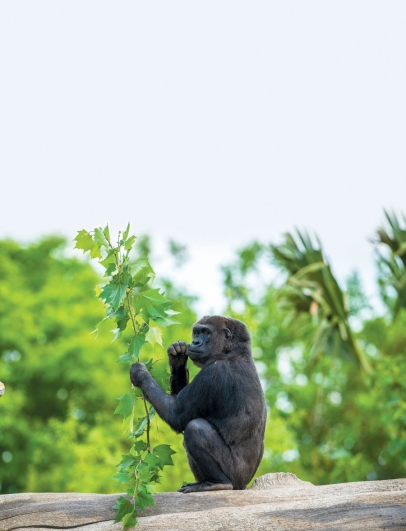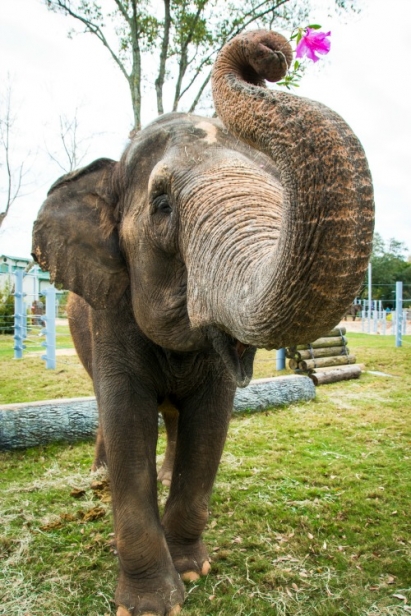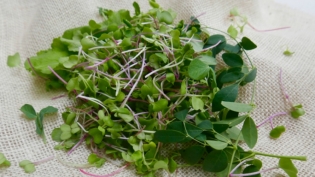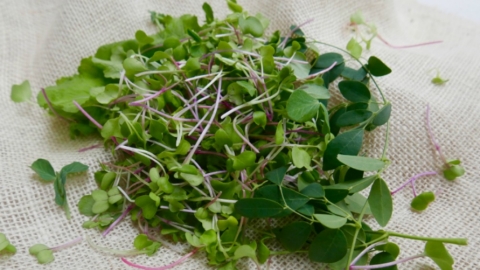Houston Zoo Keeps It Local for their Animals
The Houston Zoo’s gardens provide treats for creatures large and small
Visitors to any zoo love to observe the animals during feeding time. As with people, there’s much to learn about an individual through their eating habits. (Did you know that an elephant replaces its teeth up to six times over its lifespan?) In the case of exotic animals, it’s also often fun to watch. According to staffers, animals at the Houston Zoo enjoy this part of their day, too.
With 6,000 animals in their care, mealtime at the zoo is no small task. Beginning at 5am in the expansive commissary, the Animal Nutrition staff spends three to four hours each morning thawing meats, chopping produce, sorting insects and loading hay and grains, carefully following dietary plans for each creature. The majority of feed is ordered from commercial vendors, but for the last decade the Houston Zoo’s Horticulture Team has grown plants and vegetables right on premises.
Currently the team tends 55 acres of diverse plants, many of which serve an important function as “browse,” a term for any fresh plants given to animals for nourishment and enrichment as a replacement to what these species would forage in the wild. The zoo’s horticulturists work closely with zookeepers to identify safe browse to supplement animal diets.
“Browse can be anything from vegetables to bushes, gingers, little fibrous plants, trees—really anything that we’ve approved as nontoxic,” says Jesus Campos, the horticulture team’s browse specialist. Browse gardens are scattered throughout the zoo and include a tree farm, a hoop greenhouse full of 75 hibiscus plants (everyone loves it!), education gardens and even vegetation in beds along zoo walkways.
“As far as browse is concerned, it’s the most natural part of the animal’s diet,” says Campos. “If you think about these animals in the wild, they wouldn’t be getting fresh produce from a grocery store; they’d get whatever they can find. They’d be hunting for berries and flowers and things that they want.”
Formerly vacant plots near the staff parking lot have been outfitted with giant metal feeding troughs repurposed as planters to grow seasonal vegetables you might find in your own garden or at the farmers market: lush, leafy greens—chard, kale, mustards; carrots, Chinese chives; berries; figs and even cacti, which the tortoises adore. Similar to a CSA delivery, the browse team harvests and prepares boxes of mixed greens, which can be requested by any zoo department. (Most go to the gorillas and other large primates—lettuces are their favorite.)
Denser roughage, like tree limbs, is necessary in the diets of many large hoofed animals, including giraffes and elephants, as it helps strengthen jaw muscles and encourages healthier mouths.
Browse plants aren’t always intended for consumption, but rather enrichment to encourage natural behaviors, learning and play. For example, says Campos: “Some of the browse we give to carnivores, they’ll chew on it.”
In addition to contributing to the well-being of the animals, zoo horticulturists strive to employ sustainable growing practices. Flowering plants make up a huge population of the zoo’s flora, attracting pollinators and other beneficial insects that help the entirely organic edible gardens thrive. Produce scraps are sent to Living Earth Resources in the Woodlands and return as nutrient-dense compost to nourish plants. Much of the beds that serve as beautification on the grounds serve double duty as browse, too.
“Purchasing browse can be very costly for zoos, so growing it on property is more affordable and accessible,” says Campos. Sounds like there’s no need for the Houston Zoo to browse for a better deal— they’ve developed a winning ecosystem of their own.








